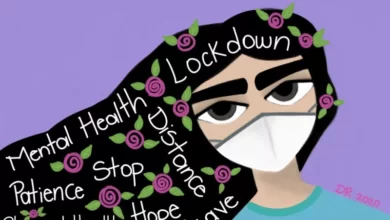The Importance of Gender and LGBTQ+ Education: Creating Inclusive and Safe Learning Environments

In today’s increasingly diverse society, education plays a crucial role in fostering inclusive and safe learning environments for all students. It is essential for educational institutions to recognize and address the unique needs of diverse student populations, including those related to gender and LGBTQ+ identities. By providing comprehensive gender and LGBTQ+ education, schools and institutions can create an atmosphere of acceptance, respect, and equality, benefiting not only LGBTQ+ students but the entire school community.
Understanding Gender and LGBTQ+ Identities
Before delving into the importance of gender and LGBTQ+ education, it is crucial to have a clear understanding of the terms involved. Gender refers to the social and cultural roles, behaviors, and expectations associated with being male or female, while LGBTQ+ encompasses lesbian, gay, bisexual, transgender, and queer/questioning individuals, along with other diverse sexual orientations and gender identities. Recognizing and respecting these identities is essential to create an inclusive and supportive learning environment.
Unfortunately, gender and LGBTQ+ individuals often face numerous challenges within the educational system. Bullying, discrimination, and exclusion are all too common experiences for LGBTQ+ students, which can have detrimental effects on their mental health, academic performance, and overall well-being. It is imperative for educational institutions to address these issues proactively.
Benefits of Gender and LGBTQ+ Education
Implementing comprehensive gender and LGBTQ+ education brings a multitude of benefits to both LGBTQ+ students and the entire school community. By incorporating inclusive and accurate information about gender and sexual orientation into the curriculum, schools can foster empathy, understanding, and acceptance among students. When students learn about diverse identities from an early age, they are more likely to develop inclusive attitudes, reducing prejudice and discrimination.
Moreover, gender and LGBTQ+ education helps create safer school environments by actively combating bullying and harassment. By promoting awareness and understanding, educational institutions can empower students to become allies, standing up against discriminatory behaviors and creating a sense of belonging for LGBTQ+ individuals. This leads to increased self-acceptance and improved mental well-being among LGBTQ+ students, who can thrive in an environment where they feel supported and validated.
Furthermore, gender and LGBTQ+ education benefit all students, regardless of their sexual orientation or gender identity. It encourages open discussions about diversity, challenging societal norms and stereotypes. By learning about different identities and experiences, students develop a broader perspective of the world, fostering critical thinking, empathy, and respect for individual differences. This not only prepares them for a diverse and inclusive society but also equips them with the necessary skills to become compassionate and inclusive leaders in their communities.
Strategies for Implementing Gender and LGBTQ+ Education
To effectively implement gender and LGBTQ+ education, educational institutions can adopt several strategies and practices:
- Incorporating inclusive curriculum and materials: Schools should include LGBTQ+-inclusive content across various subjects, integrating diverse perspectives and experiences into the curriculum. This includes using textbooks, literature, and resources that accurately represent gender and LGBTQ+ individuals.
- Providing teacher training and professional development: Educators play a crucial role in creating inclusive classrooms. Schools should offer training and professional development opportunities for teachers to enhance their understanding of gender and LGBTQ+ issues, develop strategies for addressing diversity, and create a safe and supportive learning environment for all students.
- Establishing supportive policies and practices: Schools should implement anti-discrimination and anti-bullying policies that explicitly protect gender and LGBTQ+ students. These policies should outline consequences for discriminatory behavior and provide mechanisms for reporting and addressing incidents. Additionally, schools can establish support groups, clubs, or safe spaces where LGBTQ+ students can connect with peers and find support.
Successful Examples of Gender and LGBTQ+ Education Programs
Several schools and institutions have successfully implemented gender and LGBTQ+ education programs, paving the way for inclusive learning environments. One example is the Harvey Milk High School in New York City, which provides a safe and supportive space specifically for LGBTQ+ students. The school incorporates LGBTQ+-inclusive curriculum and offers counseling and support services to ensure the well-being of its students.
Another example is the Welcoming Schools program, developed by the Human Rights Campaign Foundation. This program offers professional development for educators and provides resources and lesson plans that promote inclusivity, respect, and understanding of gender and LGBTQ+ identities in elementary schools.
These programs have shown positive outcomes, such as reduced bullying, increased student engagement, and improved academic performance among LGBTQ+ students.
Addressing Concerns and Resistance
Implementing gender and LGBTQ+ education may face resistance and concerns from various stakeholders. It is important to address these issues through open dialogue and education. Some common misconceptions include the belief that gender and LGBTQ+ education promotes a specific agenda or conflicts with religious beliefs. However, gender and LGBTQ+ education are about providing accurate information, promoting inclusivity, and creating safe spaces for all students to learn and thrive.
Responding to critics involves providing evidence-based research, sharing personal stories and experiences, and highlighting the positive impact of inclusive education on student well-being and academic success. Engaging in respectful conversations and fostering understanding can help alleviate concerns and build support for gender and LGBTQ+ education.
Overcoming Challenges and Moving Forward
While progress has been made in promoting gender and LGBTQ+ education, challenges remain. Building alliances and partnerships with LGBTQ+ organizations, community members, and other educational institutions can help create a network of support and advocacy. Engaging parents, families, and communities is crucial in fostering acceptance and inclusivity, as they play a significant role in shaping students’ attitudes and beliefs.
Continuous evaluation and improvement are essential in ensuring the effectiveness of gender and LGBTQ+ education programs. Schools should regularly assess the impact of their initiatives, gather feedback from students, educators, and parents, and make necessary adjustments based on the evolving needs of the student body.
By addressing challenges, embracing collaboration, and continuously refining practices, educational institutions can create a future where gender and LGBTQ+ education is not only embraced but becomes an integral part of fostering inclusive and safe learning environments.



